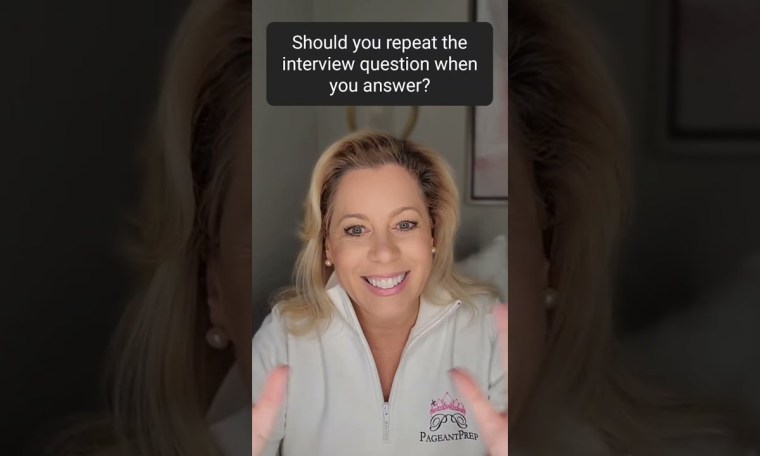
Win Your Next Pageant
Get Pageant Questions Written By A Miss Universe Judge
Should You Repeat the Question as Part of Your Answer?
In the realm of effective communication, particularly in contexts like interviews, presentations, and coaching sessions, the way we respond to questions can significantly impact clarity and understanding. One common technique that often comes up is the practice of repeating the question as part of the answer. But should you do it? Let’s explore the benefits, drawbacks, and best practices associated with this approach.
The Benefits of Repeating the Question
-
Clarification: Repeating the question can help clarify what you’re responding to, ensuring that both you and the listener are on the same page. This is particularly useful in a fast-paced environment where miscommunication can occur.
-
Emphasis: By restating the question, you can place emphasis on the topic at hand. This can help to underscore the main points you wish to address, especially if the question is complex or multifaceted.
-
Engagement: This technique can keep the audience engaged. It makes your response feel more interactive and can help capture the listener’s attention, especially if they are tuning out or distracted.
- Memory Aid: For listeners, hearing the question again can reinforce understanding and retention of the material being discussed. It serves as a mental anchor, making it easier to follow along with your answer.
The Drawbacks of Repeating the Question
-
Time Consumption: In situations where time is of the essence, repeating the question can become redundant and slow down the flow of conversation. This can be particularly detrimental in interviews where time is limited.
-
Perceived as Filler: Overusing this technique can come across as a lack of confidence or as verbal filler. Listeners might interpret excessive repetition as a sign that you’re stalling or unsure of your answer.
- Not Always Necessary: In some contexts, the audience may already understand the question well. Repeating it can feel unnecessary or even patronizing, leading to frustration.
Best Practices for Repeating the Question
If you decide to incorporate this technique into your communication repertoire, here are some best practices:
-
Be Selective: Use the technique judiciously. Assess whether repeating the question adds value to your response or if it will bog down the conversation.
-
Paraphrase: Instead of verbatim repetition, consider paraphrasing the question. This can show that you understand it and provides a fresh way to present the topic.
-
Keep It Brief: If you choose to repeat the question, keep it short and to the point to avoid unnecessary elaboration.
-
Transition Smoothly: Maintain a natural flow by transitioning smoothly from the repetition to your answer. This can enhance the overall comprehension of your response.
- Read the Room: Pay attention to your audience’s reactions. If they seem engaged, it’s a good sign. If they appear restless or frustrated, it might be time to cut back on the repetition.
Conclusion
Repeating the question as part of your response can be an effective communication tool when used appropriately. Its benefits in terms of clarity, engagement, and memory retention can enhance understanding. However, it’s crucial to balance these advantages against the potential drawbacks. Being mindful of the context and the audience’s response can guide your decision on whether to incorporate this technique into your communication toolkit. Ultimately, the key to effective communication lies in adapting your style to best suit your audience’s needs and the situation at hand.
ON SALE: Pageant Dresses
GET OUR: Pageant Questions
CHECK OUT MORE: Pageant Coaching
LEARN ABOUT: Beauty Pageants






